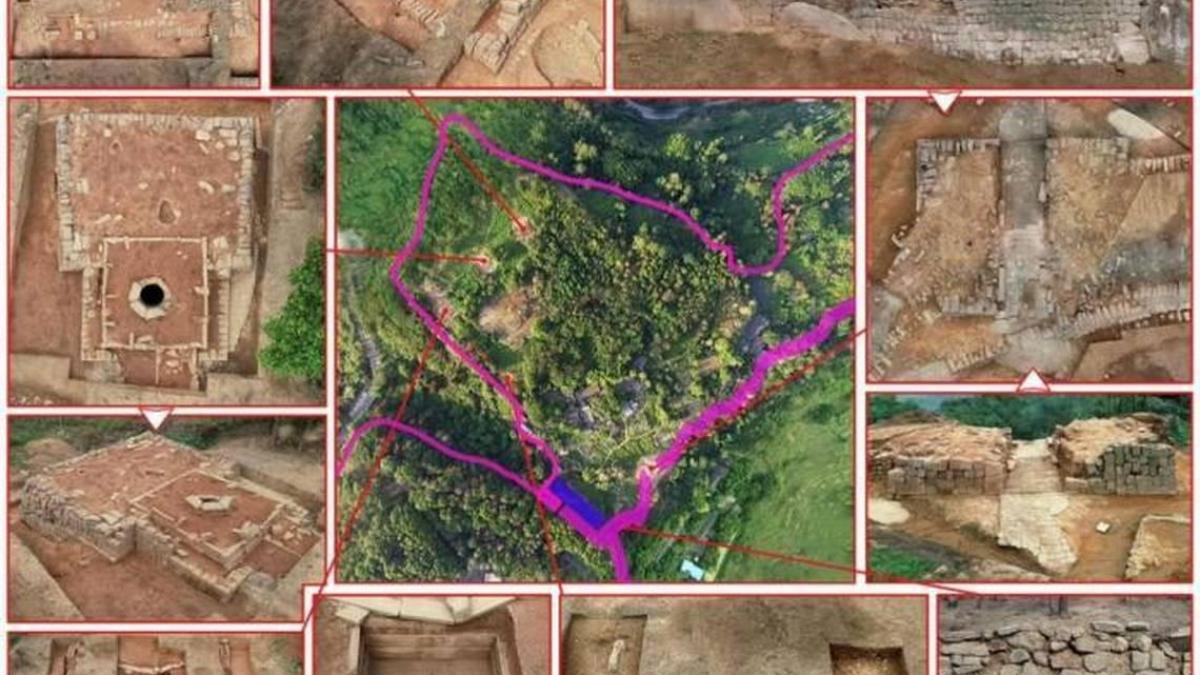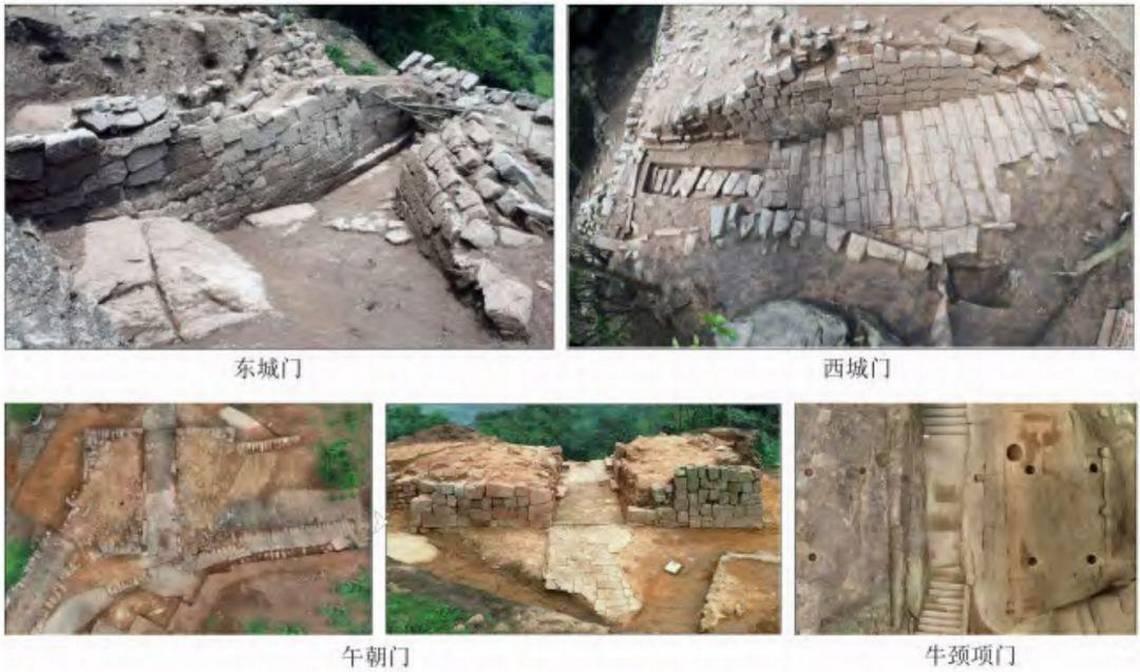Aspen Pflughoeft
Source - https://www.bellinghamherald.com/news/nation-world/world/article271539847.html
 Archaeologists in Chongqing excavated Diaoyu City, a sprawling mountaintop fortress, and found an imperial palace in the ruins, photos show. Photo from China News Network via the Institute of Archaeology at the Chinese Academy of Social Sciences
Archaeologists in Chongqing excavated Diaoyu City, a sprawling mountaintop fortress, and found an imperial palace in the ruins, photos show. Photo from China News Network via the Institute of Archaeology at the Chinese Academy of Social Sciences
Soldiers stood alert, watching from their cliffside posts for signs of siege. Secure in the palace, Chinese royalty and government officials strategized defensive plans. Explosions reverberated against the mountain. Invaders emerged from underground tunnels and attacked the city. Defeated by time, nature and spiteful invaders, the ruins of Diaoyu City are a vulnerable shadow of the fortified city’s former glory. Even still, excavations at the archaeological site in Hechuan District, China, unearthed a sprawling city. Archaeologists have been excavating Diaoyu City for almost 20 years, the Institute of Archeology at the Chinese Academy of Social Sciences said in a Tuesday, Jan. 17, news release shared via China News Network. The 800-year-old city is built into a mountain and sits at the meeting point of three rivers.
Diaoyu City was heavily fortified and strategically designed for military strength, experts said. Mongol armies attacked the city in 1259 as part of their effort to conquer and control all of China. Chinese soldiers tried to hold off the invasion, but eventually the city fell. The Mongols, whose rule later became known as the Yuan dynasty, already controlled northern China in 1259, according to Britannica. The Song dynasty controlled the southern half of the country until its defeat in 1279.
Archaeologists have found 14 distinct sets of ruins from the Song dynasty spread across seven terraces in Diaoyu City, the Chongqing Institute of Cultural Relics and Archaeology said in a news release from Jan. 9. Recent excavations unearthed ruins of the imperial palace, the Institute of Archaeology said. Situated on the highest terrace, the palace had a pavilion surrounded by numerous large buildings, archaeologists with the Chongqing Institute said. Photos show a few of these structures.
 The imperial palace ruins included mulitple large structures. Photo from China News Network via the Institute of Archaeology at the Chinese Academy of Social Sciences
The imperial palace ruins included mulitple large structures. Photo from China News Network via the Institute of Archaeology at the Chinese Academy of Social Sciences
The palace is surrounded by the inner city wall — the first of three walls surrounding the city, per the Chongqing Institute’s news release. Midway down the mountain, ruined structures are surrounded by another outer wall. At the base of the mountain, three naval wharves are connected to the city by walled roads. On a lower terrace, archaeologists also uncovered a pier-shaped gate with a pool and water well nearby. Photos show the structure. Three other city gates of different styles have been found at the site.
 Ruins of the pier-shaped gate. Photo from the Chongqing Institute of Cultural Relics and Archaeology
Ruins of the pier-shaped gate. Photo from the Chongqing Institute of Cultural Relics and Archaeology
Along one cliffside, wall ruins snake across a narrow path. The spot likely had an observation post or other military warning facility, researchers said. Photos show the current location and what the observation post may have looked like.
 A fortress wall where an observation tower may have stood. Photo from the Chongqing Institute of Cultural Relics and Archaeology
A fortress wall where an observation tower may have stood. Photo from the Chongqing Institute of Cultural Relics and Archaeology
Archaeologists uncovered an underground tunnel, chiseled into the mountain by Mongol armies and used to launch attacks. Over 80 pieces of explosive firearms have been found in the tunnel, the Chongqing Institute said. These relics are the oldest physical evidence of explosive firearms.
Another section of the ruined city contains over 40 irrigation and drainage ditches, pools and other structures from a water distribution system, according to the releases. The self-contained water supply was necessary to sustain the city and its inhabitants during the Mongol siege.
 One section of the city, known as the Fanjiayan Ruins, show a complex water system. Photo from the Chongqing Institute of Cultural Relics and Archaeology
One section of the city, known as the Fanjiayan Ruins, show a complex water system. Photo from the Chongqing Institute of Cultural Relics and Archaeology
Over 10,000 relics have been found throughout Diaoyu City, archaeologists said. Eight large stone inscriptions unearthed near a city gate recorded the ruined city’s story. The inscriptions documented the city’s construction and fateful battle.
 A complex of ruins, known as the Jiukou Pot Ruins, where eight large inscriptions were found. Photo from the Chongqing Institute of Cultural Relics and Archaeology
A complex of ruins, known as the Jiukou Pot Ruins, where eight large inscriptions were found. Photo from the Chongqing Institute of Cultural Relics and Archaeology
After the Mongols took control of China, they destroyed many large-scale, fortified mountain cities, researchers with the Chongqing Institute said. Diayo City was almost completely destroyed, only the foundations of buildings remained, buried in the mountain and abandoned for centuries. Many portions of Diaoyu City have not been fully excavated, cleaned or studied, according to the Institute for Archaeology’s news release. Archaeologists plan to continue this work to develop a fuller understanding of the mountaintop military fortress city. Hechuan District is in the central municipality of Chongqing and about 1,200 miles west of Shanghai.